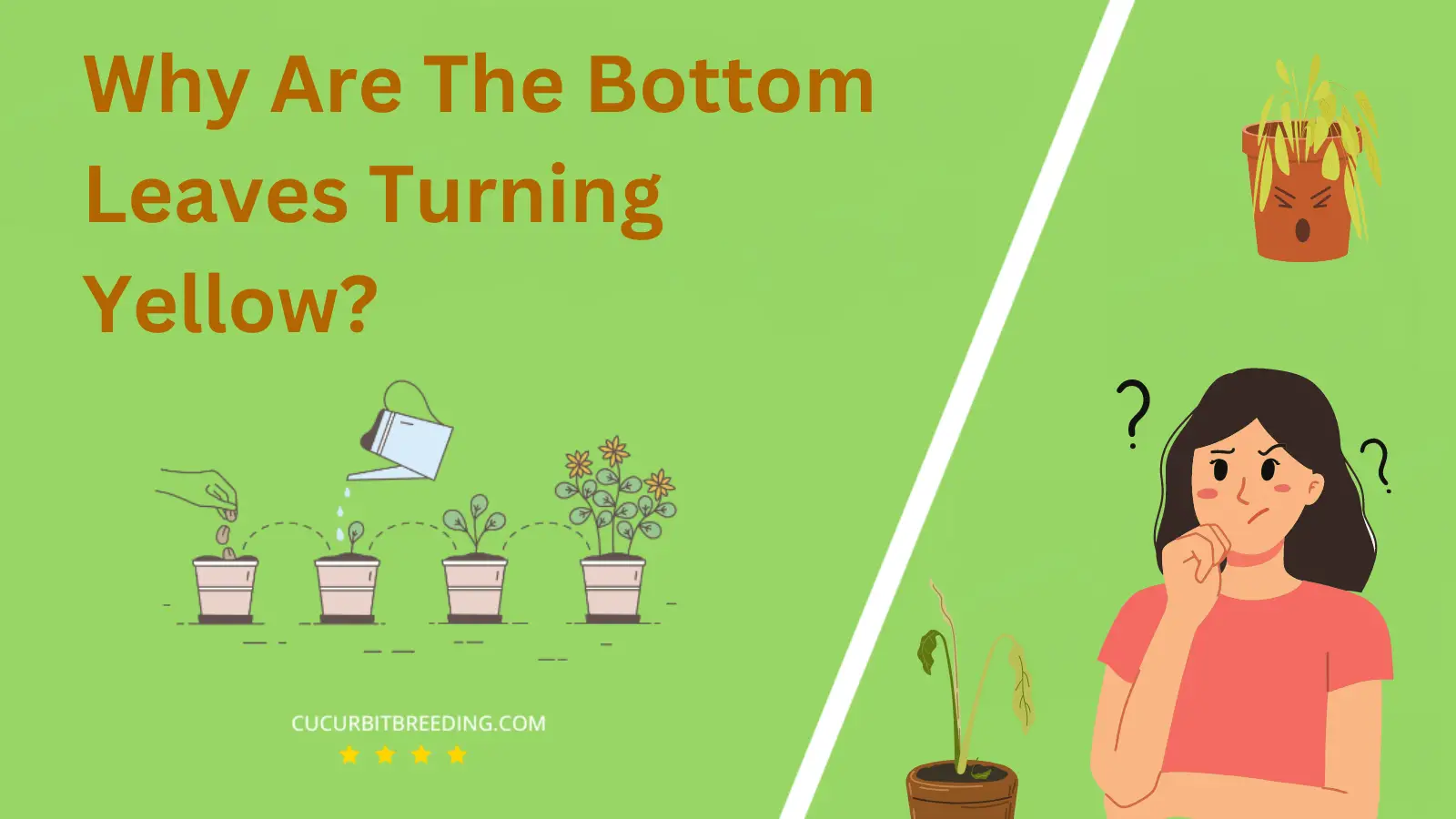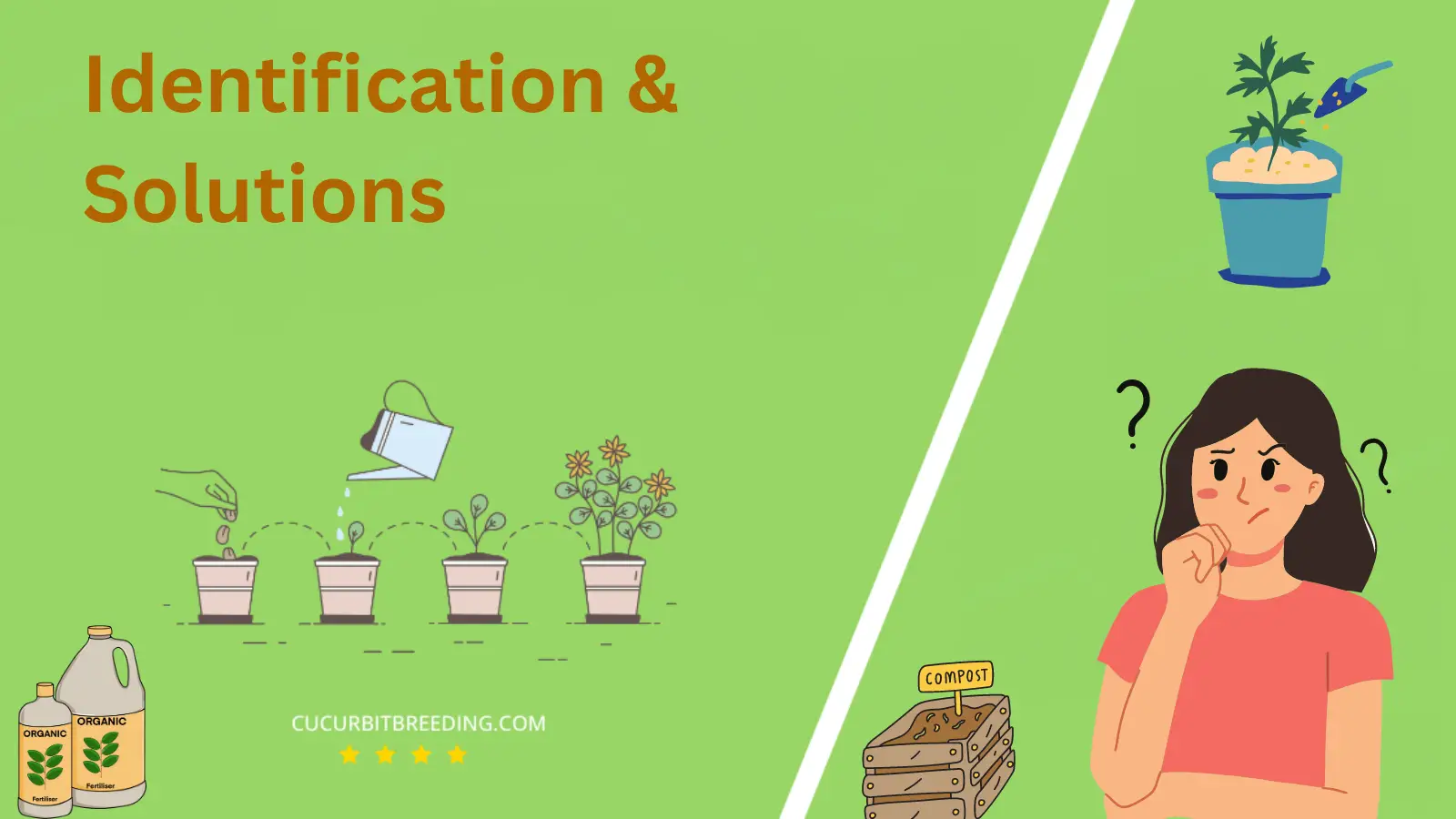
Why are the bottom leaves turning yellow? This is a common question that nags at the minds of many plant enthusiasts and home gardeners alike. Plants are a vibrant puzzle of colors and patterns, an enchanting integration of biology and art.
However, the moment that lush green starts to fade into a sickly yellow, panic tends to set in. Is it a natural evolution as the leaves mature, or is it a sign of an underlying issue? Let’s delve into the world of plants and unravel this mystery.
Why Are The Bottom Leaves Turning Yellow?
1. Nutrient deficiency
| Description | in the soil can lead to yellowing of bottom leaves due to insufficient chlorophyll production. |
|---|---|
| Solution | Provide the plant with proper nutrients to address the yellowing of bottom leaves. |
Nutrient deficiency often leads to the bottom leaves of a plant turning yellow. This can be due to a lack of essential elements such as nitrogen, potassium, or magnesium in the soil. These nutrients play a crucial role in the overall health and functionality of a plant, including chlorophyll production which gives leaves their green color. When these elements are lacking, the plant may begin reassigning nutrients from the older, lower leaves to younger, upper leaves causing the bottom leaves to yellow.
To remedy the situation, gardeners could use a well-balanced fertilizer which contains a mix of all essential nutrients. Regularly feeding the plant with this fertilizer can replenish lacking nutrients in the soil. In addition, adjusting the pH of the soil through the addition of lime (to raise pH) or sulfur (to lower pH) can make existing nutrients more available to the plant. It’s also important to ensure adequate watering, as both underwatering and overwatering can impact nutrient absorption.
Please ensure that any solution is performed gradually and in moderation to avoid causing additional issues like fertilizer burn. For specificity, you can conduct a soil test to determine which nutrients are deficient.
Tags: Nutrient Deficiency, Soil Fertilization, Soil pH, Watering Practices, Soil Testing.
2. Overwatering
| Description | causes roots to suffocate, leading to nutrient deficiencies and chlorophyll degradation, resulting in yellowing leaves. |
|---|---|
| Solution | Reduce watering and ensure proper drainage to prevent waterlogged roots, promoting healthy leaf color. |
Overwatering is one of the common reasons why the bottom leaves on plants may turn yellow. This occurs because excessive water makes it harder for the plant roots to get the appropriate amounts of oxygen. It can also cause root rot which further inhibits the plant’s ability to absorb water and nutrients effectively, leading to yellowing leaves and eventual plant death.
To rectify overwatering, reduce the frequency of watering and allow the soil to dry out between waterings. Consider repotting the plant if root rot has set in. Using well-aerated soil can also help promote proper moisture absorption. Maintain a consistent watering schedule based on the specific needs of each type of plant. Monitoring plants frequently can help identify early symptoms of overwatering, ensuring prompt action and healthier plants.
3. Soil pH imbalance
| Description | The imbalance in soil pH causes the bottom leaves to turn yellow due to nutrient deficiency. |
|---|---|
| Solution | Adjust soil pH to correct imbalance and promote healthy nutrient uptake for green bottom leaves. |
Over-acidic or over-alkaline soil can lead to a pH imbalance, affecting the plant’s ability to absorb necessary nutrients. This imbalance often occurs when a plant is unable to intake sufficient nitrogen, potassium, or iron due to the pH of the soil which can manifest in yellowing leaves, notably at the bottom of the plant. Soil pH imbalance not only impacts a plant’s health but also impacts its growth and appearance.
Solutions to a soil pH imbalance require testing of the soil pH levels to determine whether it’s overly acidic or alkaline. For soil that’s too acidic, you could incorporate substances like lime or wood ash to increase the pH. If the soil is overly alkaline, use sulfur-based amendments or organic matter like compost or peat moss to decrease the pH. A balanced soil pH helps a plant absorb the necessary nutrients and will likely correct the issue of leaves yellowing. Always remember to water your plants regularly but avoid over-watering as it can exacerbate pH imbalances. It could take several weeks to observe improvements in your plant after making these adjustments.
4. Lack of sunlight
| Description | The imbalance in soil pH causes the bottom leaves to turn yellow due to nutrient deficiency. |
|---|---|
| Solution | Adjust soil pH to correct imbalance and promote healthy nutrient uptake for green bottom leaves. |
When the bottom leaves of a plant turn yellow, it could be due to a lack of sunlight. In this situation, photosynthesis is not occurring optimally. Photosynthesis is a process that plants use to turn sunlight into energy. If the bottom leaves are not receiving enough light, they are unable to properly photosynthesize, which can lead to a yellowing color as they lose their healthy green pigmentation.
The solution to this issue is to adjust the plant’s light conditions. It’s crucial to ensure that the plant is getting the appropriate amount of light for its particular species. If it’s an indoor plant, try moving it to a brighter spot, preferably near a window with plenty of sunlight. If it’s an outdoor plant, consider transplanting it to a sunnier location. Using grow lights may also be an option if natural light is limited. Remember, every plant is different and might require differing amounts of sunlight. Hence, researching about your specific plant’s sunlight requirements is essential.

5. Pest or disease infestation
| Description | Adjust soil pH to correct imbalance and promote healthy nutrient uptake for green bottom leaves. |
|---|---|
| Solution | Apply appropriate pesticide or fungicide to prevent or eliminate infestation, and ensure proper watering and sunlight. |
Bottom leaves can turn yellow when a plant is affected by pests or disease. Such infestations can disrupt a plant’s ability to take in nutrients, causing the leaves to suffer nutrient deficiencies and turning them yellow. This problem often begins in older, lower leaves, as pests often target these softer, easier-to-reach areas and plants prioritize nutrient allocation to new, developing parts.
To solve this problem, the first step in the process is to correctly identify the pest or disease. Examine your plant carefully, looking out for small insects, fungal growth, or other signs of disease. If a pest is the cause, consider organic or chemical pesticides, focusing on those that specifically target the type of pest you have. Ensure to remove the infested leaves to prevent further spread. In case of disease, applying a suitable fungicide or bactericide can combat the problem. Always try to follow the product instructions carefully and ensure to provide your plant with proper care to improve its overall health and resistance against pests and diseases.
6. Age of the plant
| Description | The bottom leaves turn yellow due to the natural aging process of the plant. |
|---|---|
| Solution | Increase nutrient intake and adjust watering schedule according to the plant’s age. |
Just like any other living being, plants too have a life cycle. The bottom leaves turning yellow is often a natural part of this cycle as older leaves age and eventually die off to make way for new growth. This process, known as senescence, may lead to the leaves at the bottom of the plant turning yellow as nutrients are reabsorbed into the plant before they completely die off.
To manage this normal aging process, gardeners should monitor plant health regularly. If yellowing leaves are only occurring at the base of the plant and the plant is otherwise healthy, removal of the old leaves will allow the plant to direct more energy towards the new growth. It’s essential to ensure that the plant is receiving its optimal care requirements, such as light, temperature, and feeding for its overall health.
However, it’s important to note that consistent yellowing of bottom leaves can also indicate other issues such as overwatering, nutrient deficiency, or disease, and it is beneficial to consult with a gardening professional if this is the case.
7. Environmental stress
| Description | causes chlorophyll breakdown, leading to yellow coloration due to reduced photosynthesis and nutrient deficiency. |
|---|---|
| Solution | Provide adequate water, nutrients, and temperature control to mitigate environmental stress on the plant. |
One common reason for the bottom leaves of a plant to turn yellow could be due to overwatering. When a plant gets too much water, it can cause the roots to become waterlogged and oxygen starved. Consistently wet conditions can lead to root rot. Affected roots can’t deliver enough water to the leaves, and that could start turning yellow.
First and foremost, limit the frequency of watering to only when the topsoil feels dry to the touch. Overwatering is often a result of giving the plant more water than it can actually absorb. Second, ensure the plant is planted in a well-draining soil and pot. Standing water at the bottom will only compound the overwatering issue. Lastly, in severe cases where root rot may have already set in, you may need to repot the plant, removing as much of the rot as possible and treating with a fungicide to prevent further spread.